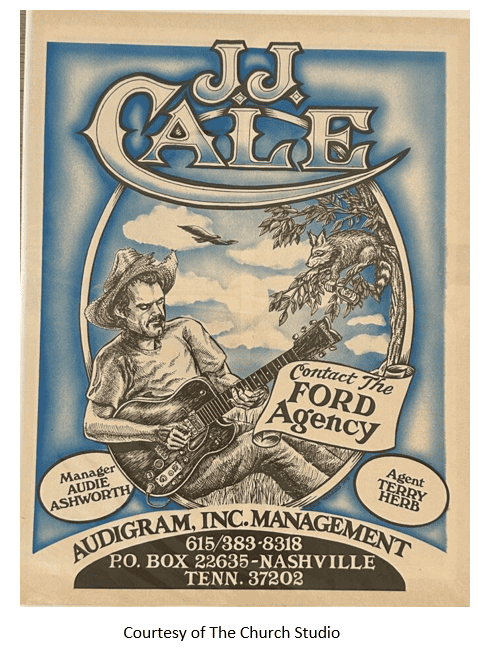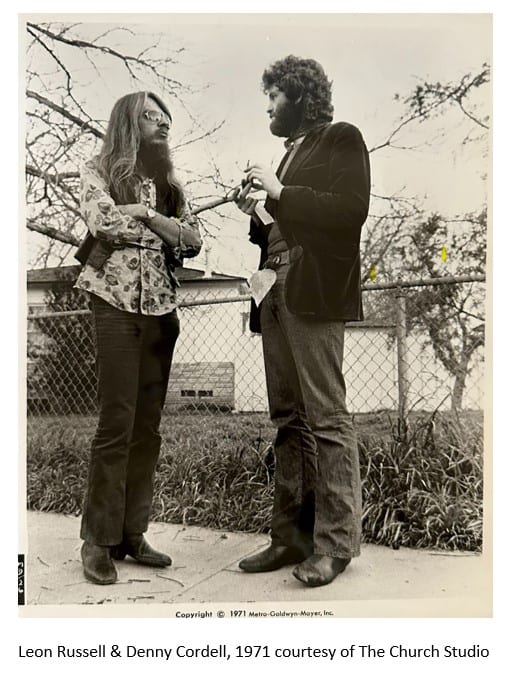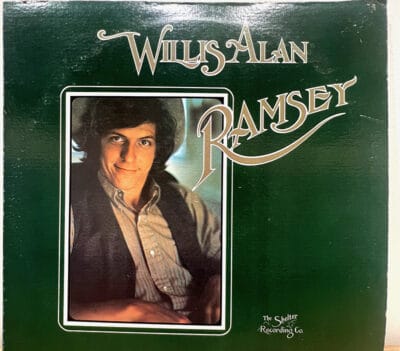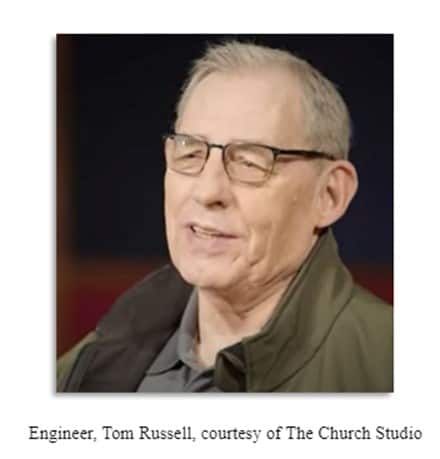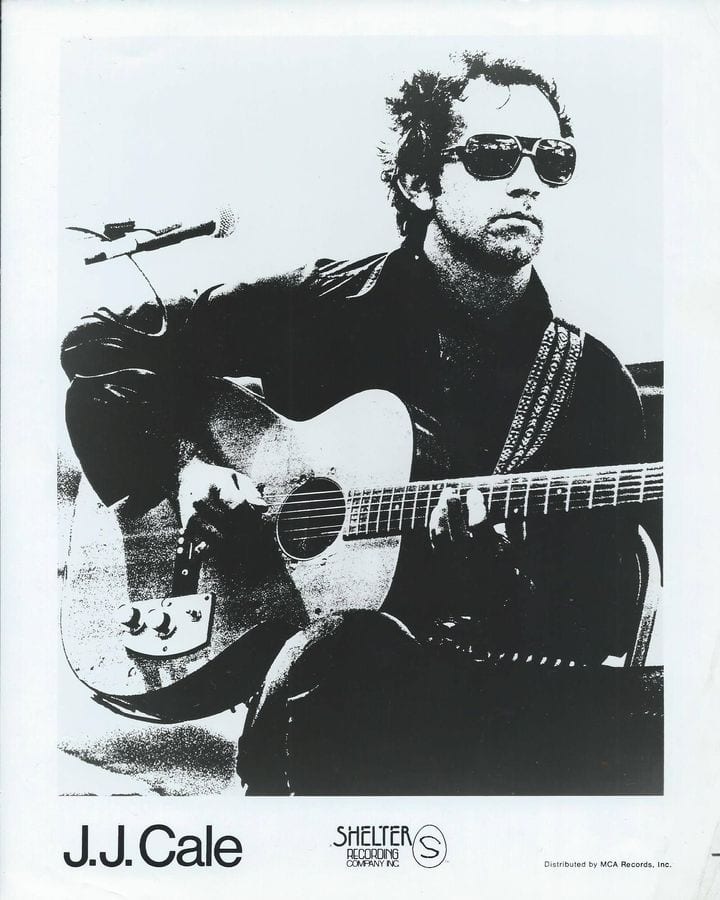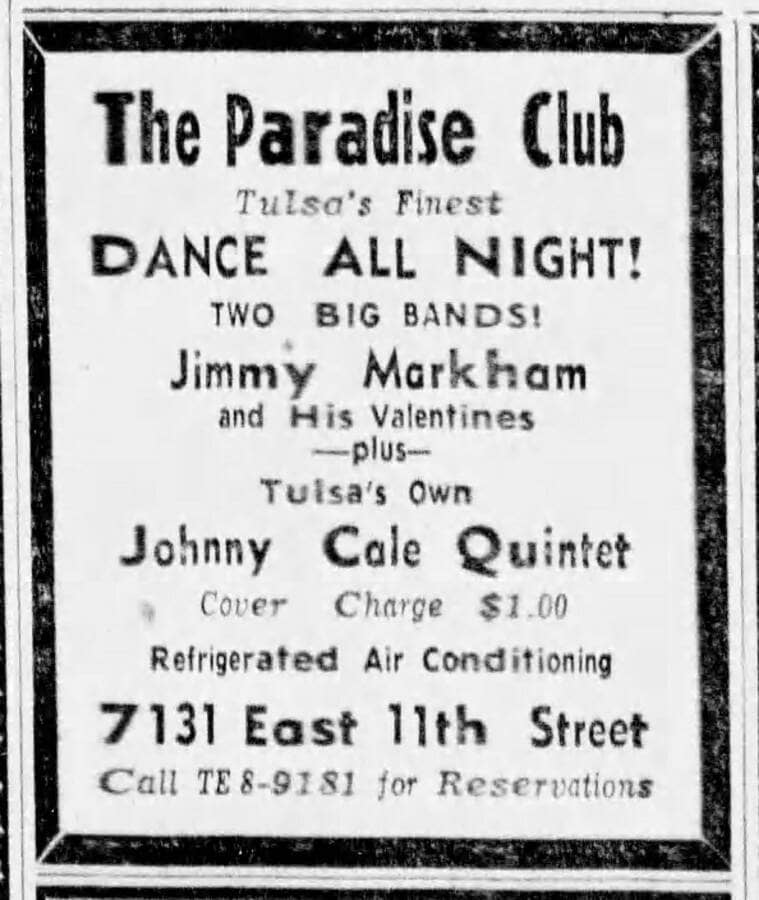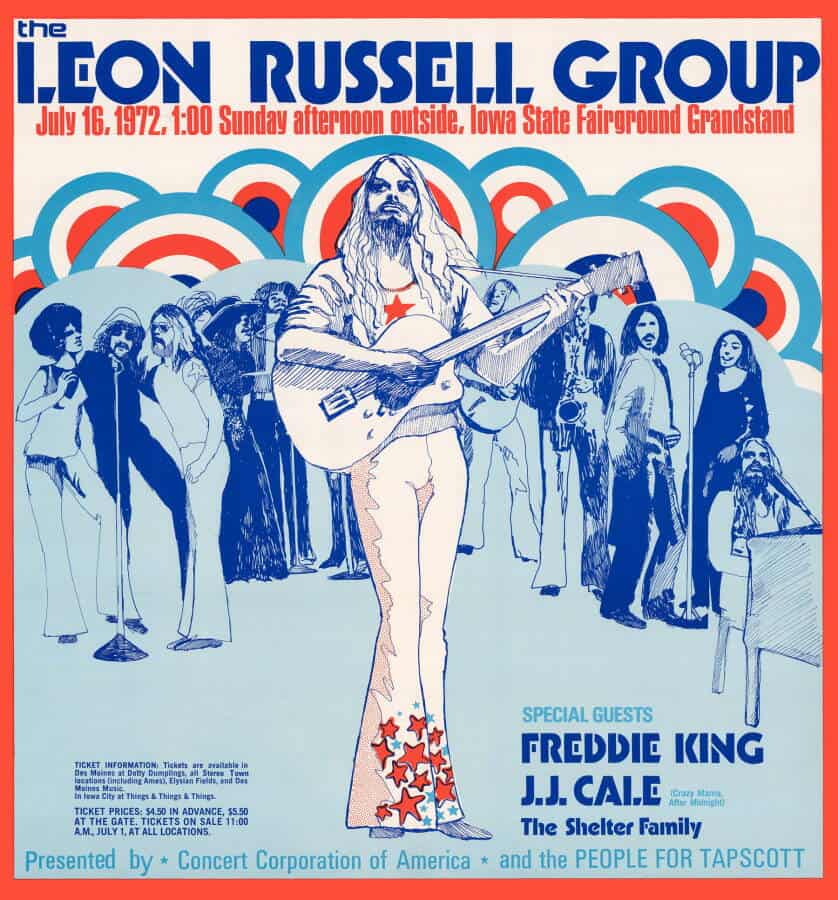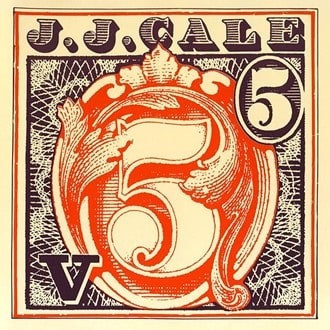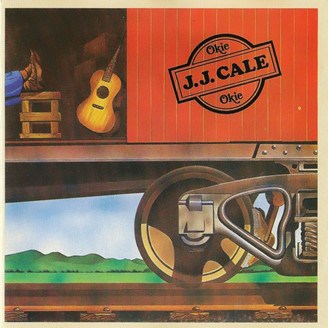JJ Cale Finds Shelter
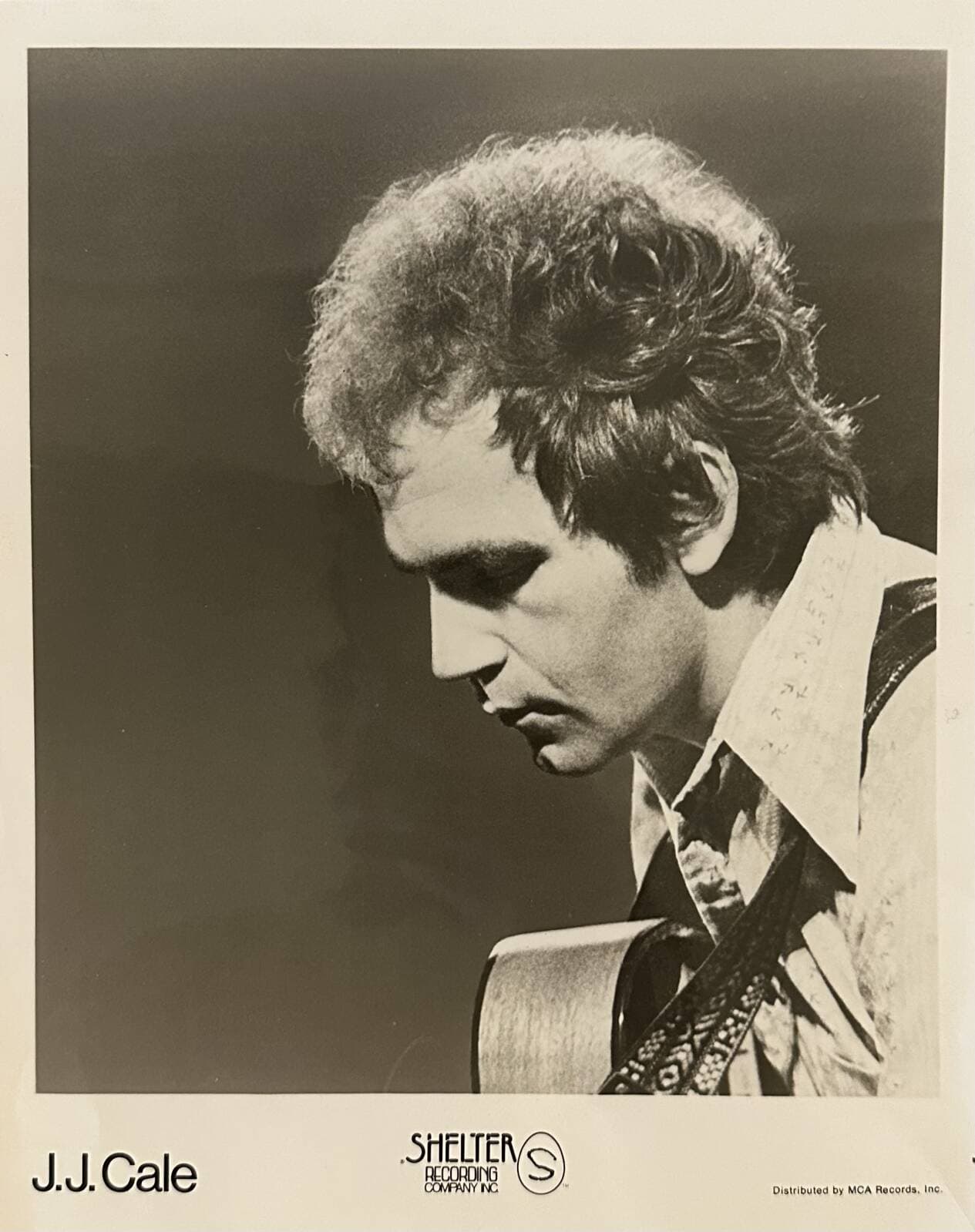
After shopping around for more than six months, Audie Ashworth and JJ Cale decided to sign with Leon Russell and Denny Cordell’s Shelter label, probably on June 5, 1971. This was the same day that Cale re-recorded a new version of “After Midnight” (at Cordell’s request, some say Ashworth’s), and also added “Don’t Go To Strangers” to round out his debut album to 12 tracks. Two days later, he joined the musician’s union. Over the next four years, Cale not only recorded for Shelter, but he also worked for them, most likely pro bono.
We all know that Johnny Cale was not only a singer-songwriter-guitarist, but he had honed his skills throughout the 1960s as an engineer and producer. Russell and Cordell had founded Shelter in January 1970, utilizing studios in California to get their venture going. One of the attractions of signing Cale, it seemed, was not only his friendship with Leon Russell, but his ability to find his way around a studio.
One of the first glimpses we get of Cale’s presence as more than just a Shelter artist comes from Willis Alan Ramsey. The 20-year-old singer-songwriter-guitarist born in Alabama and raised in Texas, had recently signed with Shelter, and Russell had lined up the musicians to kick things off. “Leon threw me in the deep end,” Ramsey said. Russell and producer Denny Cordell surrounded Ramsey with recording pros, including Carl Radle, Jimmy Lee Keltner, Jesse Ed Davis, Chris Ethridge, and Jim Messina, and rolled the tapes. “I was just nervous as a cat,” Ramsey admitted. “John Cale came out, and he settled me down. He would take me into Sunset Sound and the first thing he’d do was lie down on the sofa by the console and take a nap.” The extremely laid-back style of Cale did the trick. Ramsey grew to enjoy the studio environment. (Joe Patoski, NPR interview/article with Ramsey, April 2018)
Sunset Sound was a well-known recording studio that opened in 1962, and tracks 1, 5, 9, and 10 of Ramsey’s resulting album were recorded there in July, 1971. This was the only LP he ever recorded (although rumored to be an unreleased second one). The album credits include a special thanks to Cale, who didn’t play on the album but obviously was a mentor of sorts at the time.
Cale was back in Tulsa sporadically during the first half of 1972, in between touring, but on March 1 of that year, Leon Russell purchased an old church on the corner of 3rd and Trenton in the Pearl District, just east of downtown Tulsa. And by November 1973, in a wide-ranging article by Billboard Magazine reporter, Bob Kirsch, Russell owned the entire block, including 14 houses. Shelter’s administrative and publishing operations were situated in several of them, while others were assigned to producers and engineers, as well as other artists and business guests. One of those houses was allocated to JJ Cale.
“You can’t really get the whole picture of the recording scene at the time without realizing that we had a studio here (The Church), Leon had a studio at the lake (Grand), he had a studio at his house, JJ had his little thing down the street, and things were happening all the time.” (Tom Russell, chief engineer, The Church Studio interview, Dec 15, 2020)
The house that Cale lived in was along 3rd Street. This privilege, it seems, came in lieu of his working as a producer-engineer for Shelter. Cale had his own mini studio of sorts in the house, and it was here that he noodled and most likely wrote quite a few of the songs that permeated his 70s albums. Tom Russell, (from Muscle Shoals) was the chief engineer at The Church Studio, and the above interview was apparently conducted with 1972 employees, so that implies Cale had his little house that year.
The exact nature of Cale’s work with Shelter, other than fulfilling his contractual requirements, is pretty obvious to us, and the Billboard article makes it rather clear. It was mainly based on an interview with Denny Cordell, who outlines Shelter’s set-up, philosophy, artist roster, and plans, and during the conversation, he makes the following comment: “I would not like to impose a limit of acts on a label. I know that I personally cannot produce no more than three acts at once. But again, maybe J.J. can handle six artists, and maybe we have three other producers that can work comfortably with six acts. In other words, we will keep the roster at a size that is comfortable for all of us.” (Billboard Nov 10 73, Bob Kirsch) So here we have a cozy business arrangement that benefits both Cale and Shelter. Leon and Denny get that extra, on-hand production input, and John gets a free house near the center of town.
In the same article, Cordell mentions that Cale plays the Tulsa club scene two nights a week, and the location would have been perfect. As late as 1974, we have a snippet from a muralist that says Cale was still living in Leon Russell’s little house. “In 1994, Denny Cordell hired me to do various artworks for Shelter Tulsa, including murals on the studio and control room doors. The gig took me 3 months. I stayed at JJ’s house all the time—he was away in Nashville recording, so I never got to meet him… it felt good inside.” (The Church Studio Facebook page comment, December 6, 2021)
Cale’s recording of his 3rd album, “Okie,” took place between May and December 1973, so the painter artist may have confused things with an actual touring schedule that had 3-month chunks bookending 1974. It sounds like Cale’s “little shag carpet-cladded house,” as The Church Studio describes it these days, was well-lived in, to the point that it had a good vibe inside. So, JJ Cale was literally working for his shelter, it seems, in the first half of the 70s in Tulsa.
As his fan base and covers of his songs continued to rise, so did his bank account. Sometime in 1975, he relocated to Nashville, and gradually Shelter’s hometown connections faded, although he still stayed under the Shelter label until 1979’s album “5.” That was the same year he made the Paradise Studios video with Leon Russell, and after that, the two seemed to drift apart, just like Denny and Leon had a few years before. But for three years, Cale had a very convenient roof over his head, was close to his family, and could do whatever he pleased. It appears that this modus operandi was exactly what Shelter was all about, and with The Church Studio, also known as Party Central, this fitted Cale’s situation perfectly.

